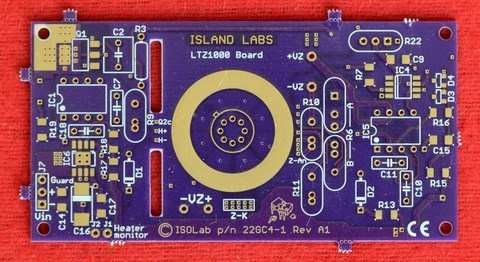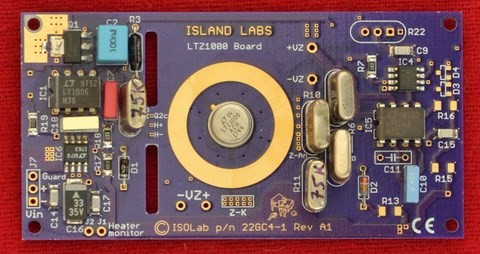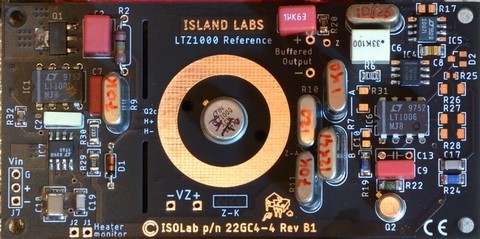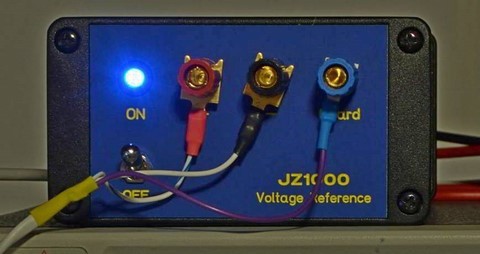LTZ1000 Reference Board
LTZ1000-based, ultra-stable voltage reference
Description
Very stable (<0.05 ppm/°C), ultra-low-noise and excellent long-term stable reference standard, based on the LTZ1000 from Linear Technology, now Analog Devices.
Now also with the ADR1000AH, the new reference from Analog Devices.
Details:
- Stability: < 0.05 ppm/°C (Typical < 0.02 ppm/°C)
- Ageing: <2 ppm/year (after the first year)
- Buffered and unbuffered outputs
- Drive high capacitive load
- Integrated EMI filter
- Supply voltage: 11V to 16V DC
- Integrated low dropout and low noise voltage regulator
- Work down to 9V without sacrificing performance
- Reverse Power Protection
- Low cost
The circuit
The LTZ1000 and LTZ1000A are ultra-stable temperature controllable references. They are designed to provide 7V outputs with temperature drifts of 0.05ppm/°C, about 1.2µVp-p of noise and long-term stability of 2µV/√kHr.
Included on the chip, there are a sub surface Zener reference, a heater resistor for temperature stabilisation, and a temperature sensing transistor. External circuitry is used to set operating currents and to temperature stabilise the circuit allows thus maximum flexibility and best long-term stability and noise.
The LTZ1000 and LTZ1000A references can provide superior performance to older devices such as the LM299, provided that the user implements the heater control and adequately manages the thermal layout. To simplify thermal insulation, the LTZ1000A uses a proprietary die attach method to provide significantly higher thermal resistance than the LTZ1000.
Setting Control Temperature
The emitter-base voltage of the control transistor sets the stabilisation temperature for the LTZ1000. With the values given in the applications, the temperature is about 60°C. This provides 15°C of margin above a maximum ambient of 45°C, for example. Production variations in emitter-base voltage will typically cause about ±10°C difference. Since the emitter-base voltage changes about 2mV/°C and is very predictable, other temperatures are easily set.
Because higher temperatures accelerate ageing and decrease long-term stability, the lowest temperature consistent with the operating environment should be used. The LTZ1000A should be set about 10°C higher than the LTZ1000. This is because normal operating power dissipation in the LTZ1000A causes a temperature rise of about 10°C. Of course both types of devices should be insulated from ambient. Several minutes of warm-up is usual.
TBC...




